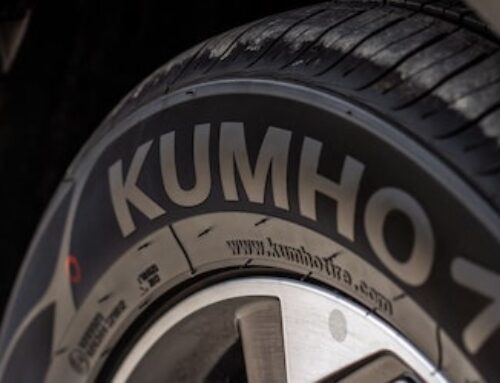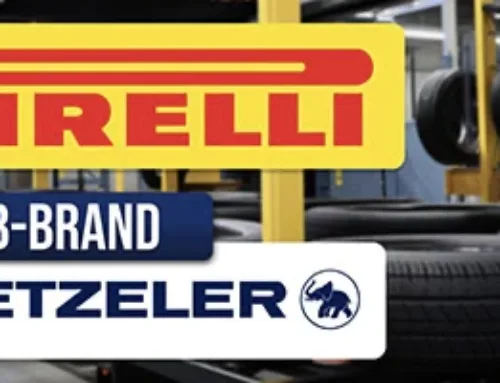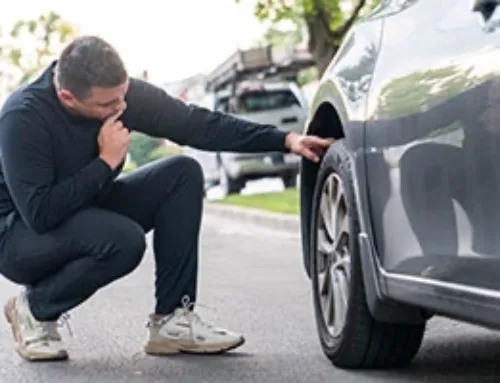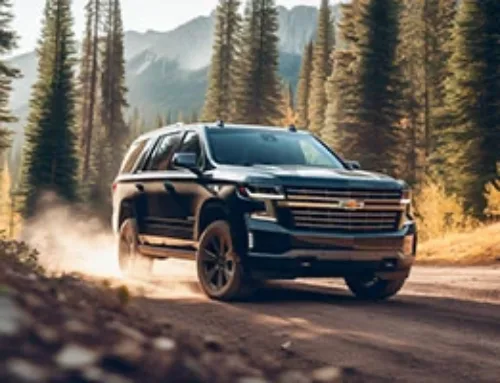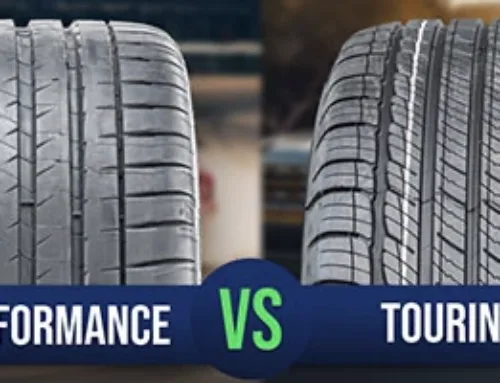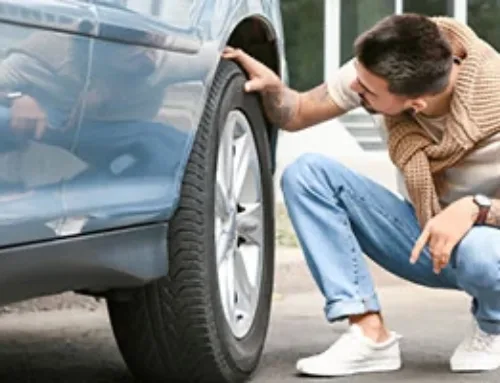Table of Contents
The time has come to buy a fresh set of tires. You might be wondering: “Should I buy new or used tires?”. As tires are one of the most important parts of your vehicle for keeping you safe on the road, it’s something you should take seriously. To help you make this important financial (and safety) decision, I’ve outlined all the pros and cons for both new and used tires.
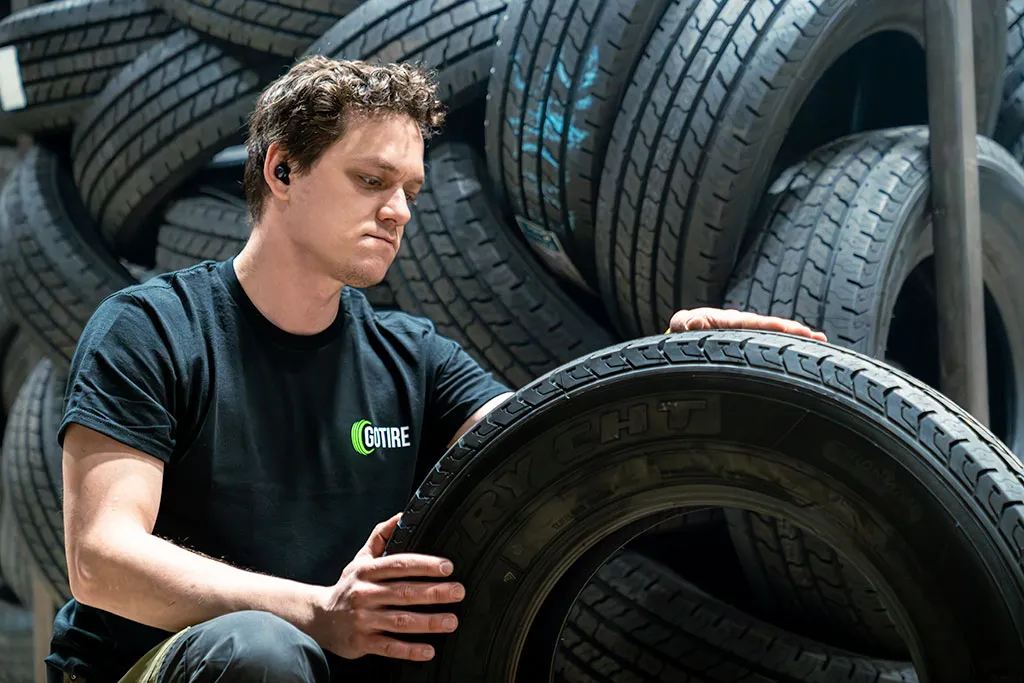
New tires
It’s always a good feeling getting something new, be it a pair of sneakers or a set of tires. We all know that buying tires is a big purchase decision, and there are so many different types to choose from. But what are some of the advantages and disadvantages of buying brand-new tires?
New tire pros
First of all, when you purchase new tires, you know exactly what you are getting. You know that they won’t have any defects or issues and they should last you for many years. A new set of tires also gives you added safety and performance and may also mean increased fuel efficiency.
Another benefit is the warranties that come with new tires. Many manufacturers offer warranties that cover defects and other issues or mileage warranties in case your tires wear out sooner than expected.

New tire cons
The main downside of buying new tires is the cost! Buying new tires can be really expensive, with even the cheapest ones clocking in at around $100 each, with most people spending around $200 – $250 per tire.
To give you an idea of how much new tires can set you back, here are prices for some of the most highly-rated 17” tires on the market by category.
| Category | Tire | Price per tire |
|---|---|---|
| Passenger car winter tires | Pirelli Scorpion Winter | $170 |
| Passenger car touring tires | Michelin CrossClimate2 | $220 |
| High-performance car tires | Continental ProContact GX | $180 |
| SUV/Crossover all-season tires | Falken Wildpeak A/T Trail | $190 |
| Passenger car all-season tires | Yokohama Advan Sport A/S+ | $160 |
As you can imagine, this is especially painful if you need to replace all four tires at once—do you have $400 – $1,000 sitting around? Depending on your type of car, you should always buy at least a pair of tires, if not a set of four, to ensure you have balanced road handling.
Another issue with a new tire purchase is the environmental impact. Did you know that manufacturing new tires and disposing of your old tires has a significant effect on the environment?
With all that said, if you can afford to buy new tires, it can be a worthwhile purchase for your family’s safety and security.
Used tires
When you think of used tires, do you think of worn tires, or do you think about saving money? Either way, let’s look at the pros and cons of buying used tires.
Used tire pros
One of the biggest advantages of used tires is that you’ll save a lot of money! Used tires are generally a lot cheaper than new ones, which means you can afford to upgrade your tires or replace your spare tire more quickly, which is very important if your current tires are seriously worn out!
Another pro in favor of used tires is how eco-friendly they are. When you buy used tires, you’re preventing these tires from being disposed of for a few more years and reducing the impact of the tire manufacturing process.
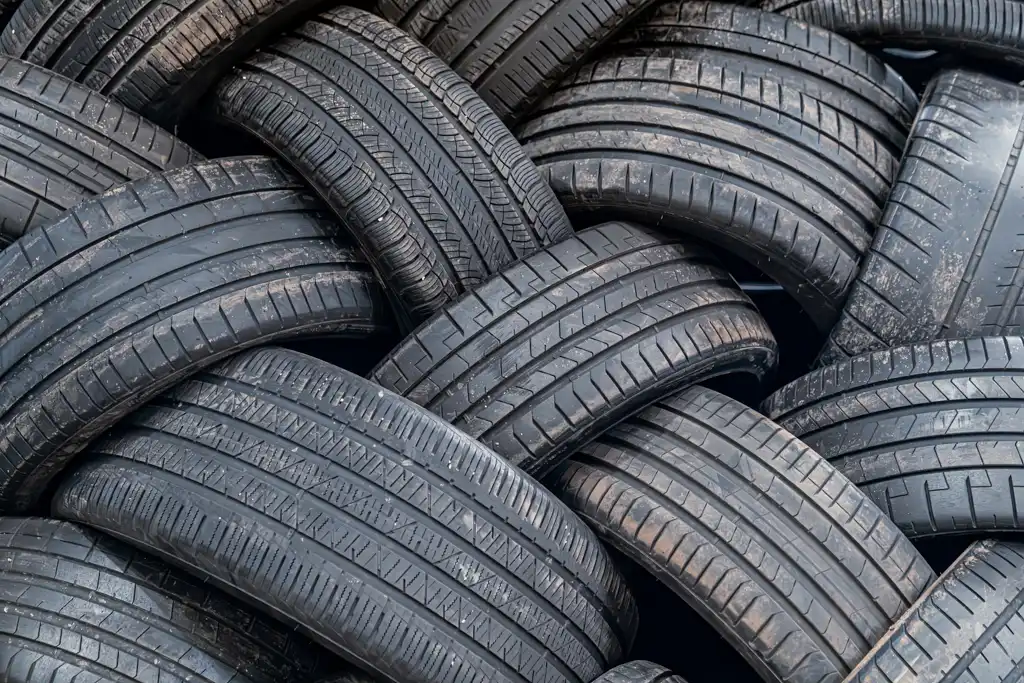
Used tire cons
Now we come to the cons of used tires, many of which depend on where you buy your tires from. While there are many reputable used tire dealers, much of the industry is unregulated, meaning that you don’t always know what you’re getting. But you’ll be pleased to hear that there are now regulations in some states, including California, to ensure that all used tires sold are safe.
The biggest con for used tires is the safety factor – they may have uneven wear or damage that is hard for your to see. All of this can affect the performance of used tires and make them less safe.
This leads to the next downside – you don’t know their history and how they were maintained. Were they properly looked after and rotated regularly? Or were they exposed to extreme temperatures or used to carry too heavy loads? All of these factors can reduce the lifespan of a tire.
Don’t let the best tire deals & tips roll by!
Sign up for our newsletter
All this being said, there are some things you can do to ensure the used tires you buy are in good condition:
- Check the tread depth—if you don’t have a tread depth gauge, you can use the penny test or, better yet, the quarter test. With the penny test, you should be able to see all of Lincoln’s head when you put the penny in the tread, giving you a depth of 2/32″. But to make sure there’s plenty of tread left, use a quarter as there’s 4/32″ above Washington’s head.
- Check for signs of uneven wear, obvious bulges in the sidewall, or damage to the tire—and if you see anything suspicious, avoid buying the tire.
- Check the tire’s age and avoid any tires that are 6 years old or up.
Overall, buying used tires can be a great way to save some money. Plus, it’s more environmentally friendly but comes with some risks. Remember, if you’re unsure at all about the safety of a used tire, it’s best to err on the side of caution and find an alternative.
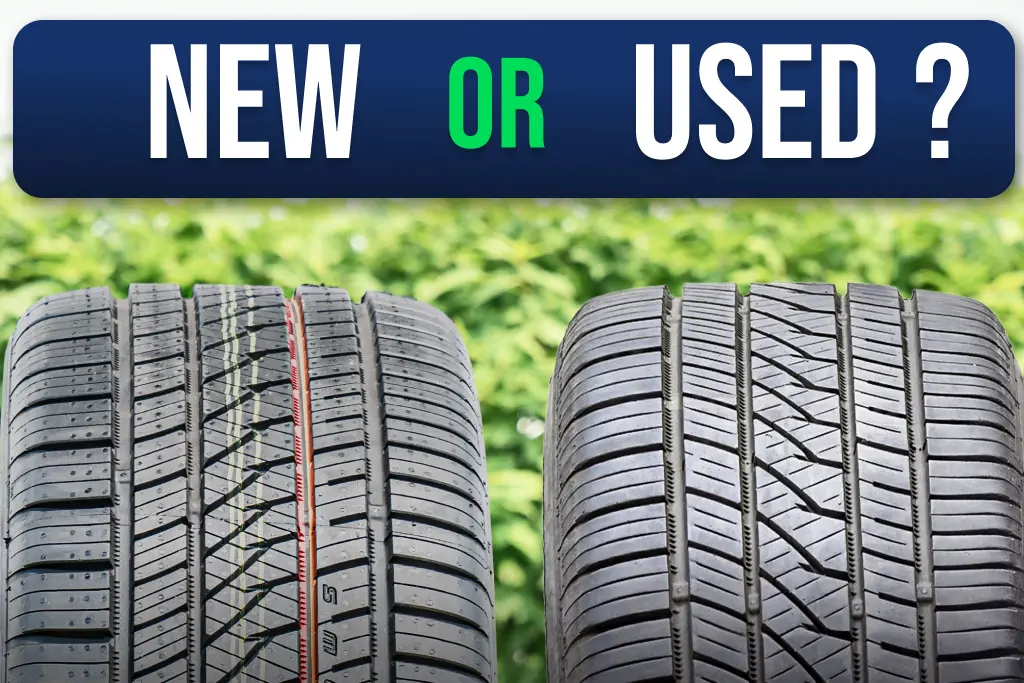
But weigh up all of the risks before making a purchase!
New tires vs. used tires, which to choose?
The decision to buy new or used tires is ultimately a personal one, based on your budget, your environmental outlook, and how important it is for you to save money. Whatever you choose, make sure you choose the right tires for your driving habits and the climate where you live, and if you decide to buy used tires online, make sure to check them thoroughly before making a purchase.
Frequently Asked Questions
Is it better to buy new or used car tires?
For many people, new tires are the best option as they offer more reliability and better warranties. However, other people will feel that the cost savings that come with used tires are more important to them. Generally speaking, if you can afford new tires, they are probably the best purchase, as they will last for longer and are more reliably safe. However, if the cost is a key factor, then used tires can be a great purchase and are definitely the cheaper option.
Is it OK to buy second-hand tires?
Yes. Buying second-hand or used tires is perfectly ok if you buy them from a reputable tire dealer and check them well before purchasing. The risks that come with buying pre-owned tires can be avoided by carrying out a few simple checks before making the purchase:
- Do they have at least 4/32″ of tread remaining? The more tread they have, the longer they will last.
- Are they in good shape overall? If they have signs of damage or irregular wear, you should pass on them.
- What is their driving history with the previous owner? Accidents, overloading, extreme temperatures, weather conditions, and poor maintenance can be red flags when buying used tires.
- How old are they? You ideally want them to be as new as possible but ideally no more than 6 years old.
Why are new tires better than old tires—is it just about tread depth?
New tires are better than old tires for a few reasons. Firstly they are more reliable as you know that they haven’t been mishandled, and don’t have a worrying history. This means that you are likely to get better performance and safety from them. They also often come with warranties which will protect you if they wear out too soon or are damaged. And, of course, you know, with a new tire, you are getting the maximum tread life, so you will be able to use the tires for many years to come.
At what mileage should I buy new tires?
Generally, you should buy new tires after about 50,000 to 60,000 miles, although some tires may last up to 80,000 or even 100,000 miles. This will all depend on how well you maintain the tires, your driving conditions, and the specific type of tires. But if you drive carefully, look after your tires well so they wear evenly, and rotate them regularly, they should last for many thousands of miles.


